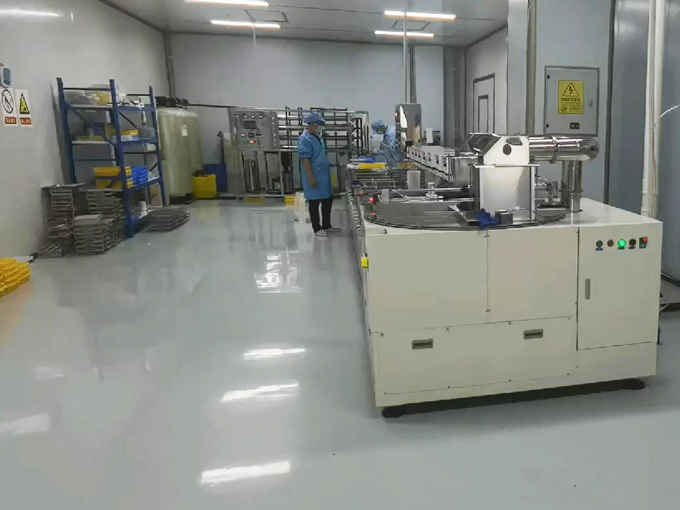Optical coating is a thin and uniform layer of one or multiple dielectric films applied to the surface of optical components. By controlling the material properties, thickness, and number of layers, optical coatings alter the reflection, transmission, absorption, or polarization characteristics of light on the surface of components to meet the specific requirements of optical applications. There are various types of optical coatings, and based on their functionality, material composition, and application areas, VY Optics can provide the following coating services to customers:
Optical Coatings

Anti-Reflective (AR) Coatings
AR coatings aim to reduce reflection losses on the surface of optical components and increase transmittance. These coatings are typically composed of alternating layers of high and low refractive index materials, utilizing interference effects to significantly reduce reflectance within specific wavelength or spectral ranges. AR coatings are widely used in lenses, filters, fiber optic connectors, displays, etc., to enhance imaging clarity, reduce ghosting, and enhance signal transmission efficiency.
High-Reflective (HR) Coatings
HR coatings aim to enhance the reflection ability of optical components for specific wavelength light. Metals such as aluminum (Al), silver (Ag), gold (Au), etc., are commonly used as HR coatings due to their excellent broadband reflection performance, especially in the visible to infrared spectrum. Dielectric multilayer films can achieve narrowband or broadband high reflectivity through precise design, suitable for precision optical systems such as laser resonators, interferometers, etc.

Beamsplitter Coatings
Beamsplitter coatings can divide incident light into reflection and transmission channels in certain proportions, such as half-mirror coatings, dichroic mirrors, etc. These coatings are commonly used in constructing optical systems such as microscopes, spectrometers, projection systems, etc. Beamsplitter coatings can be simple single-layer or multilayer designs to meet different wavelength and splitting ratio requirements.
Polarizing Beamsplitter (PBS) Coatings
PBS coatings can reflect or transmit light according to its polarization state, such as linear polarizing beam splitters or circular polarizers. They are indispensable in fields such as laser systems, polarization measurements, display technologies, etc., for separating or synthesizing linearly polarized light, circularly polarized light, or elliptically polarized light.
Optical Filter Coatings
Filter coatings allow light within specific wavelength ranges to pass through while blocking other wavelengths, including:
- Bandpass filters: allow only specific narrowband or broadband ranges of light to pass through, such as color filters, laser line filters, etc.
- Shortpass filters (long-wave cutoff): only allow light shorter than a certain cutoff wavelength to pass through, used in UV detection, fluorescence microscopy, etc.
- Longpass filters (short-wave cutoff): only allow light longer than a certain cutoff wavelength to pass through, commonly used in infrared imaging, thermal imaging systems, etc.

Anti-Reflective with High-Transmittance (V-Coat) Coatings
Designed for large field of view and large-angle incidence, V-Coat coatings can maintain low reflectance over a wide range of incident angles, suitable for optical devices such as wide-angle lenses, panoramic cameras, astronomical telescopes, etc.
Anti-Smudge (Easy-to-Clean) Coatings
These coatings reduce surface energy by changing the surface microstructure or introducing special chemical coatings to minimize the adhesion of dust, oil stains, water droplets, etc., improving the cleanliness and durability of optical components.

Scratch-Resistant (Hard-Coat) Coatings
Hard coatings, typically made of high-hardness materials such as silicon nitride, diamond-like carbon, etc., are applied to the surface of optical components to increase abrasion resistance, prevent scratches from daily use or harsh environments, and extend the service life of optical systems, especially suitable for eyeglass lenses, camera lens protectors, etc.
Electromagnetic Interference (EMI) Shielding Coatings
These coatings can suppress electromagnetic interference, protect sensitive electronic devices from external electromagnetic waves, and prevent equipment radiation from interfering with the external environment. They are commonly used in the optical windows of military, medical, communication equipment, etc.
customized design and performance enhancement of optical systems.
In summary, the classification of optical coatings covers a wide range of functions, from basic reflection control and transmission optimization to advanced polarization management, filtering functions, as well as various types tailored to specific environmental conditions and performance requirements such as anti-smudge, scratch resistance, electromagnetic protection, etc. These provide rich and diverse technical means for customized design and performance enhancement of optical systems.






